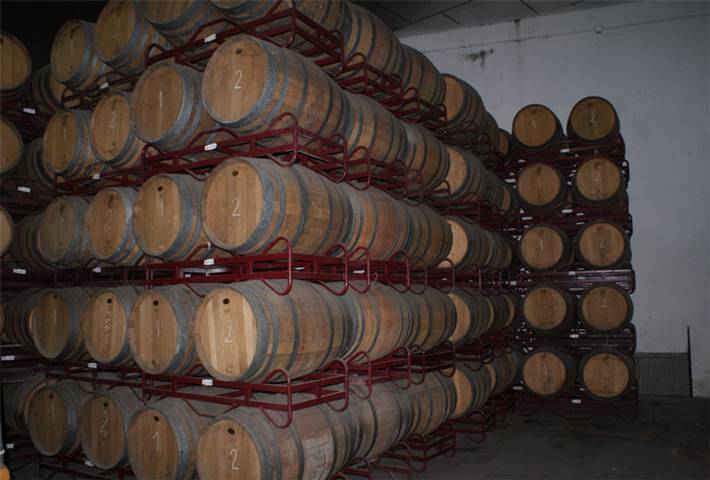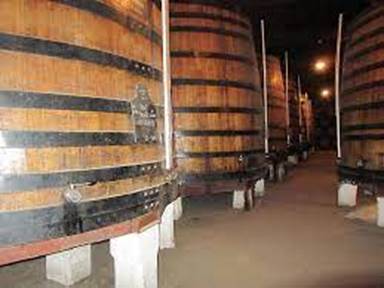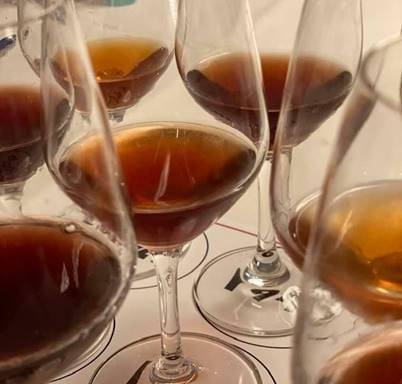Port has a long, proud history that dates back to the early 18th century. Many credit the hostilities between England and France for its creation. Essentially, the English blockaded the French ports, preventing them from exporting wines. The Methuen Treaty of 1703, granted “most favored nation” status to Portugal, keeping their wine much less expensive to import, that changed everything. Tariffs on French wine to England were increased, making Portuguese wine much more advantageous.
The English then turned to Portugal, but the fact that the wine had further to travel led them to add local brandy to the barrels to fortify the contents for the long journey by ship. The higher alcohol content from the added brandy had an interesting and unintended effect. It stopped the fermentation of the wine, meaning there was a greater sugar content left in the liquid. Suddenly, the wine was now sweet, and the concept of Port was born.
Two Types Of Port
Over the centuries, Port has developed from a happy accident into a formidable player in the wine industry. Winemakers from around the world have created their own versions. However, it means only those that come from the Douro River valley, upriver from the city of Porto in northern Portugal, can truly be a real Port.
This fortified wine generally comes in two types, Tawny and Ruby. They are both very definitely Port wines, but they are quite different. In terms of similarity, they are both sweet and are generally consumed as dessert wines. However, you can pair them with a wide range of dishes. The tasting notes of a Port are far more complex than a standard dessert wine, or aperitif.

The Differences
Now, on to the differences between a Tawny Port and a Ruby Port. The general process behind making these two types of Port is nearly identical, but the end look, flavor and taste are all different due to the types of wood casks that are used to age them and the amount of time that they spend in wood.
1. Aging
A basic Ruby Port is the youngest of all Ports and should be drunk soon after bottling. The aging process is around 18 months to two years and is generally done in stainless steel vats rather than in oak barrels. Occasionally a wooden barrel is used for a short time in the aging process, but that is uncommon and those used casks are totally neutral.
A basic Tawny Port is aged for far longer than its Ruby counterpart. It’s also aged using oak barrels, which gives it a very different flavor profile. The barrels are quite small, allowing for far greater oxygenation over the aging period. This is a minimum of three years for a basic Tawny Port and can be aged for well over a century, in the case of a Colheita.

2. Color
You can spot a Ruby Port immediately because of its rich, red color. It will instantly remind you of the berries that you can taste in the Port — blackberries, cherries, and raspberries. It’s a vibrant, rich red that can be almost black in color.
Thanks to the extended contact with oak barrels in which it oxidizes during the aging process, a Tawny Port is a quite different color. The vibrant red fades into a deeper mahogany color, making it more reddish brown. Old versions can appear gold, amber or copper in their hue.
3. Flavor
Because of the quick aging process and the short time between fermenting and drinking, a Ruby Port is full of fruity flavor. It retains all the flavor of the grapes used in the making of it, as well as the flavors from the barrels. The profile tends to be quite young and yet still quite rich. Aside from berry flavors, you will find notes of chocolate, cinnamon, licorice, and clove in a Ruby Port.
While a Ruby Port is young in flavor, a Tawny Port tastes more developed. It’s generally characterized by having a caramel profile with nuttier notes and can contain citrus and/or tropical fruits as well. It has clove and cinnamon in the profile, as well as some of those berry flavors. However, they tend to combine with fruits like fig, raisins and dried apricots. You may also taste almonds and hazelnuts in the profile, along with vanilla and butterscotch. The longer the Port remains in cask to age, the less fruit you’ll get in the flavor profile, and the more the nut and caramelized flavors will develop.
4. Serving and Pairing
You should serve a Ruby Port lightly chilled, just below room temperature. The ideal temperature is 55-60 degrees Fahrenheit. If it’s too cold or too warm, you won’t get the full range of flavor notes. In terms of pairing, a Ruby Port is the sweetest option and is often served on its own, as a dessert. It pairs very well with chocolate desserts, as well as with cheese platters that feature aged cheeses, such as Stilton, Manchego, or Serra de Estrela.
A Tawny Port is not as sweet as the Ruby Port, making it less of a standalone dessert option. However, in terms of serving temperature, you can go for the same slightly chilled temperature as a Ruby port, or just slightly colder. But never serve it straight out of the refrigerator.
For pairing options, a Tawny Port goes well with desserts that mimic the caramel flavors, such as Crème Brûlée, rum raisin flavored bread pudding or ice cream, and pecan pie. You can also pair it with any foods that are nutty and salty, making it the more diverse option. A few examples: cashews, Marcona almonds, prosciutto, bacon wrapped figs.

5. Price
A basic Ruby Port is usually going to be your least expensive option when buying wine. It’s the least complex of all the Port categories, and it’s meant to be drunk soon after bottling. This means that winemakers expect a high turnover in Ruby Port. Prices for this basic Port are usually well under $20, with some bottles selling for as little as $6 here in the USA.
Because of the longer aging process, a Tawny Port is generally more expensive than a Ruby Port. The starting price is around $18 for your younger, more basic options, and these are aged for around three years. These bottles of Port can go up to about $35-$40. On the other end of the spectrum, the bottles that have aged for several decades, to more than a century can run between $150 and $3,500.
A Port for Every Occasion
Both Tawny and Ruby Ports offer their own drinking pleasures. In the UK, far more Vintage Port is consumed than Tawny. Countries like Denmark, enjoy both and may tend more towards Tawny. The USA and Canada are major markets for the Port trade and both generally drink more Vintage Ports and LBV, in recent years this is changing and wood-aged Ports are selling very well.
You can pick between the two styles, (Ruby or Tawny) depending on your personal taste or what you’ll serve them with, when you plan to drink them, your tastes and budget. As they’re rather different, you’ll always find a bottle to suit any occasion, whether you’re marking a milestone or just looking for a pre- or post-prandial drink.


Leave A Comment
You must be logged in to post a comment.